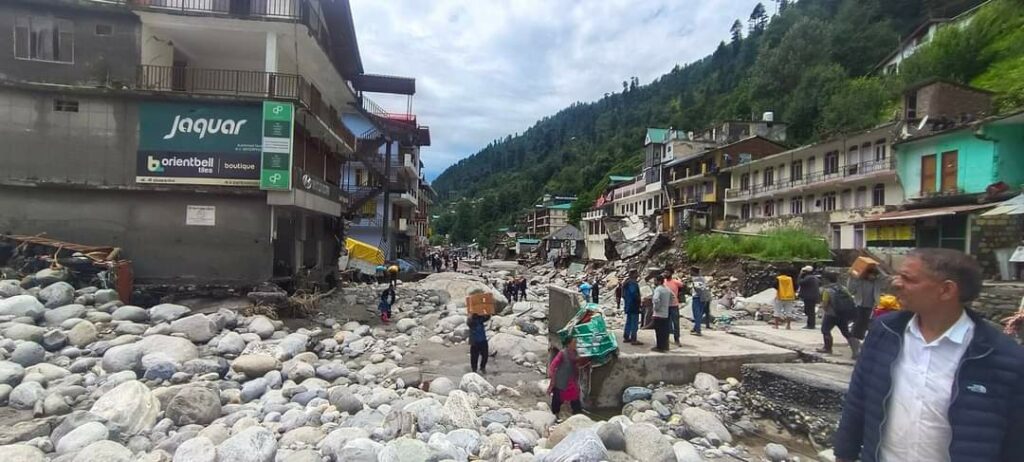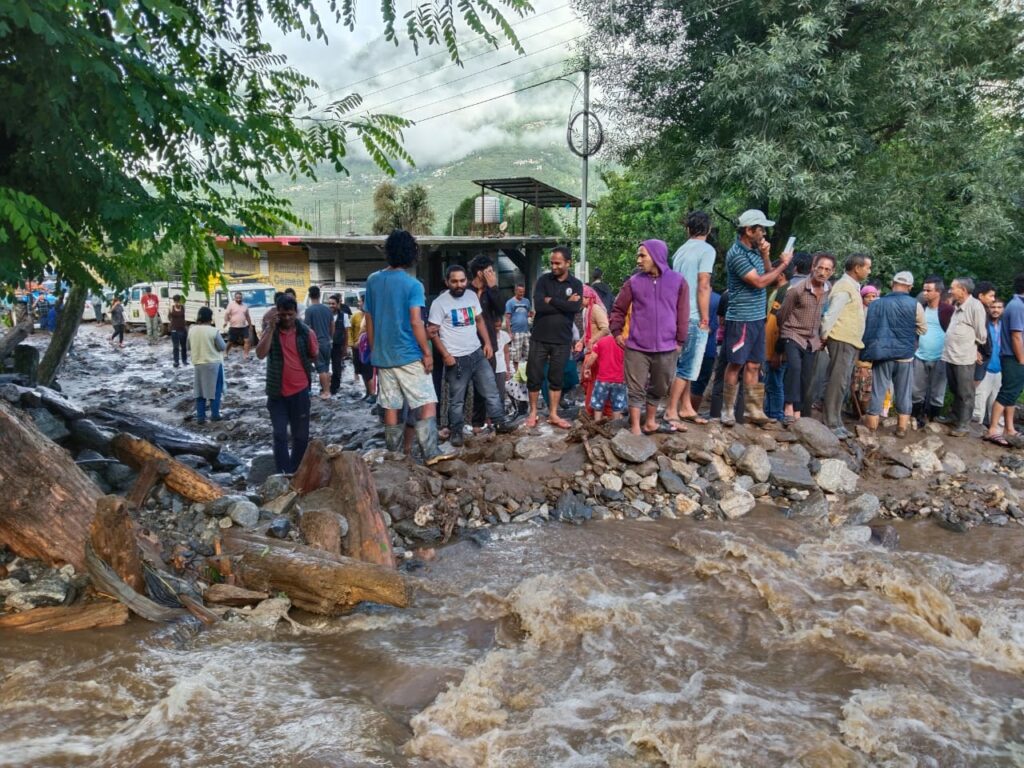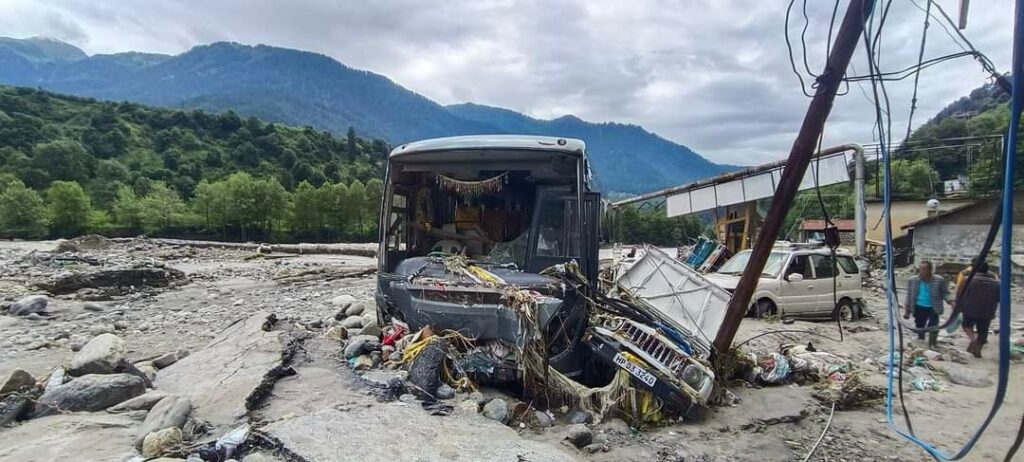Manali, September, 06: The news of houses collapsing and being swept down a gorge has become an everyday reality in the state of Himachal Pradesh. The heavy and nonstop rains, accompanied by flash floods and landslides this year have resulted in huge losses in the hill state. As per the state disaster management authority, there have been at least 367 deaths in rain-related incidents since the onset of the monsoon this year. Moreover, around 12,000 houses were damaged, approximately 506 roads shut down and 149 water supply schemes were dislocated. Thus, it is even more scary to see outlandish sights of nature’s fury and the misery engulfing the state – a memory that will stay alive for years in our collective realization.

The Himachal nightmare is certainly the result of a combination of anthropogenic factors – climate change and global warming, questionable development projects, and pressures of tourism.
The Himachal nightmare is certainly the result of a combination of anthropogenic factors – climate change and global warming, questionable development projects, and pressures of tourism. The mountain communities in Himachal and Uttarakhand that are already witnessing flash floods and landslides may see their ecosystems degraded with extremely low pliability in the foreseeable future.
Another factor that has come up nowadays in the backdrop of the Himachal floods is the haphazard and unplanned construction of houses in the state. For instance, the latest viral videos showing eight multi-strayed buildings collapsing in the flicker of an eye in Anni in Kullu district sent shivers down my spine. Because the place is a panchayat area and therefore, outside the purview of the Town and Country Planning (TCP) Act, there is no restriction on the number of floors of a building. This is a serious concern as the blend of nonstop rains and this kind of construction throughout the state has resulted in the loosening of strata. In other words, the construction of tall buildings has put excessive pressure on the land resulting in what is known as land subsidence in the state during the heavy rains causing havoc.
As part of the development process in the hill state, one has also witnessed rapid construction of hydropower projects in Himachal over the years. While their contribution to the progress of the state is enormous and much appreciated, their role in the recent floods has become a concern for policymakers. The surge in hydropower projects has also resulted in the increasing use of technology known as “run of the river” dams. This means that projects built on the rivers of Himachal have diverted the flow of water through tunnels burrowed into the mountains, and the debris disposed along the riverbeds. In the event of cloudbursts or heavy rains like this year, water carries this debris along with it resulting in disastrous consequences as is the case now. Besides, the methods used in certain constructions involve vertical cutting of mountains instead of terraced cutting resulting in adverse consequences to the environment during the rains.

The need is to rework the development model to address systemic issues faced by the Hill State. An important lesson learned from this recent calamity has been that mountain specificities should drive the development process in hill states like Himachal Pradesh. The characteristics distinguishing mountain regions from other geographies should be at the core of development planning in the state. Mountain specificities define opportunities such as comparative advantage and diversity, as well as the constraints, namely fragility and inaccessibility in Himachal’s development process.
Environmentalist Krishan Chand of Manali said, “Unscientific and illegal construction is a major concern in Manali. Now Manali wants ecological balance to ensure development activities. In recent days the Manali witnessed how unscientific developmental activities led to nature’s fury in the region. Microclimate is the major attraction in Manali hill station and ensuring the protection of the climate should be the major agenda, said Krishan.
“Every year lakhs of people around the globe visit Manali. But the reality is that there are no proper toilet facilities and proper traffic control in Manali. The committee can ensure such activities,” said Rajesh, a local resident of Manali.

Sanjay Dutta, an engineer by qualification but is a journalist by choice.
He has worked for the premier new agency Press Trust of India and leading English daily Indian Express.
With more than a decade of experience, he has been highlighting issues related to environment, tourism and other aspects affecting mountain ecology.
Sanjay Dutta lives in a village close to Manali in Kullu valley of Himachal.



Absolutely correct Sanjay but I wonder if anyone who matters is listening, our memories are very short except for people who have suffered